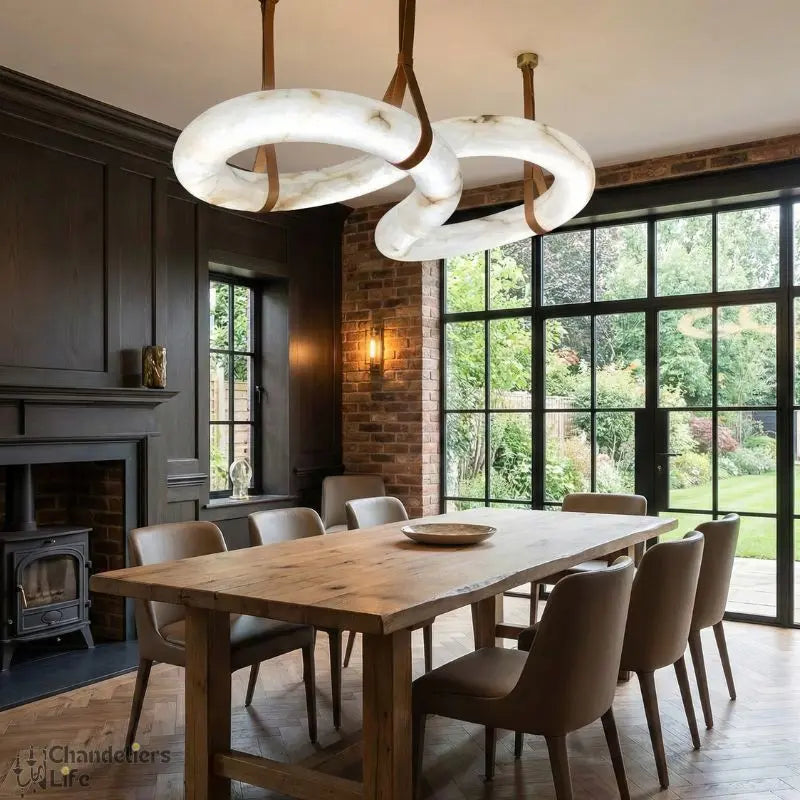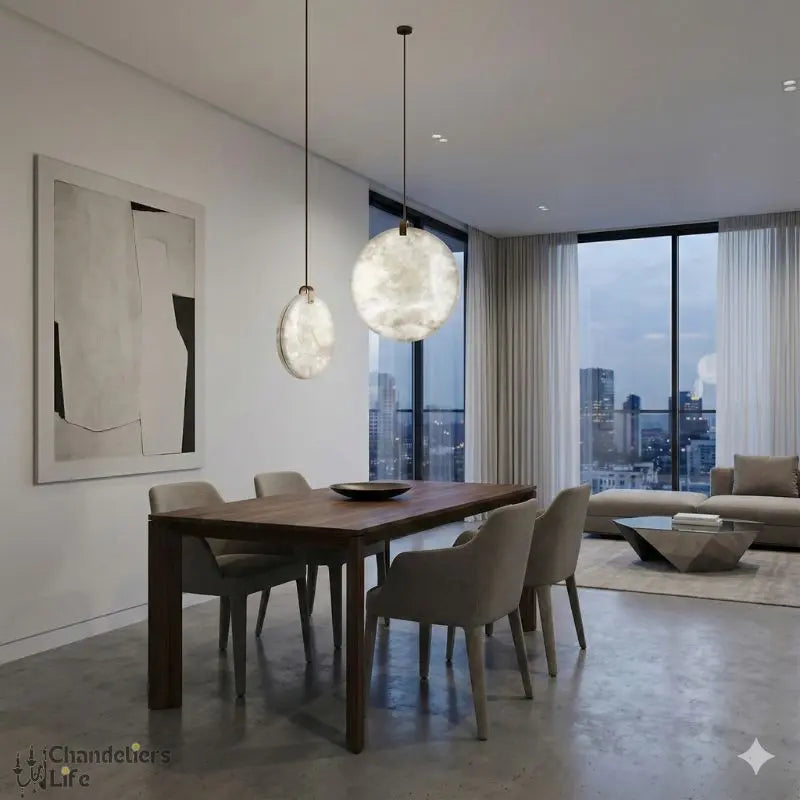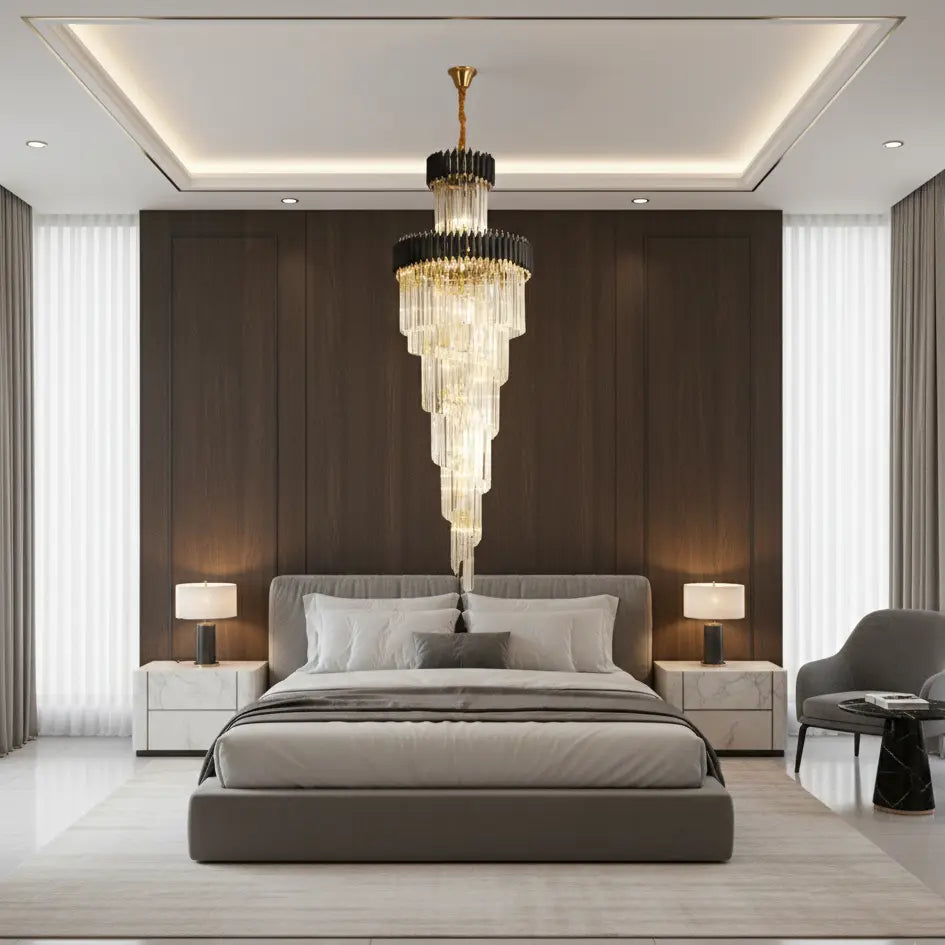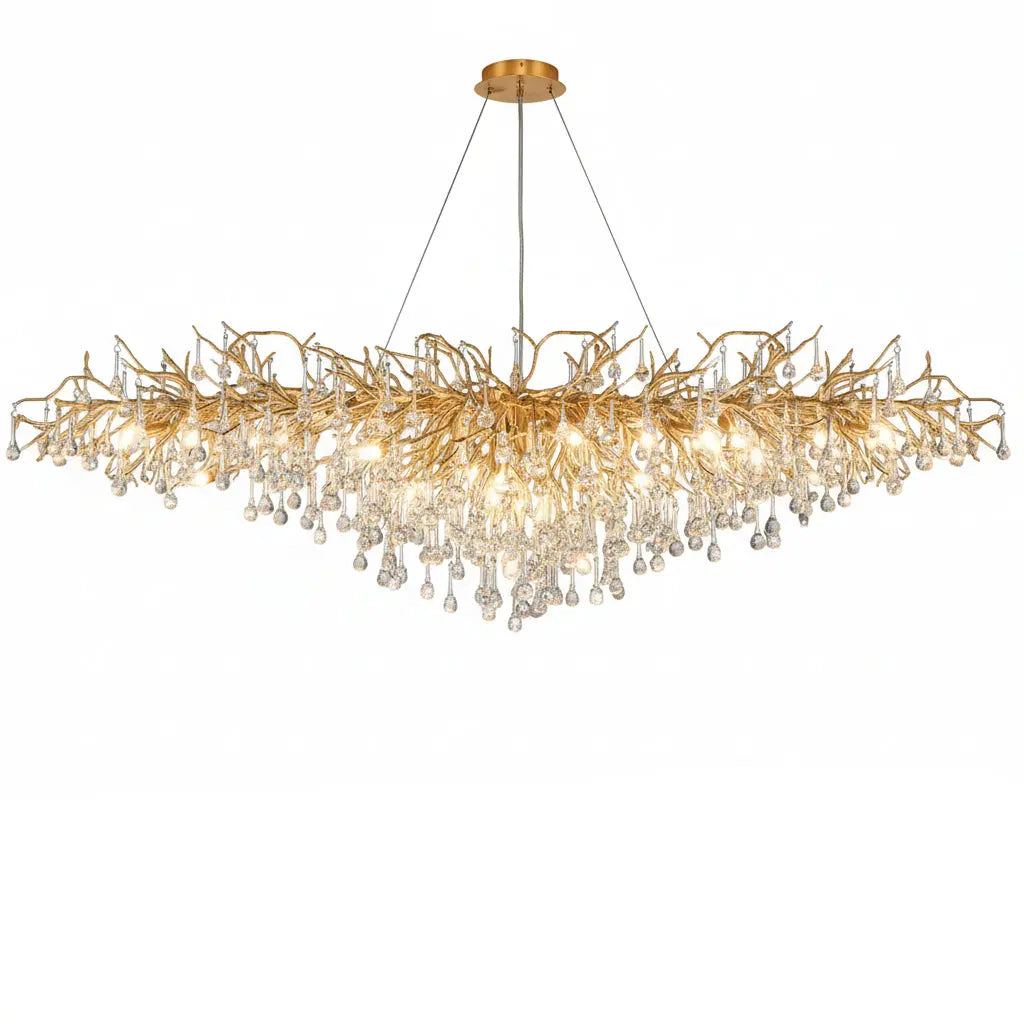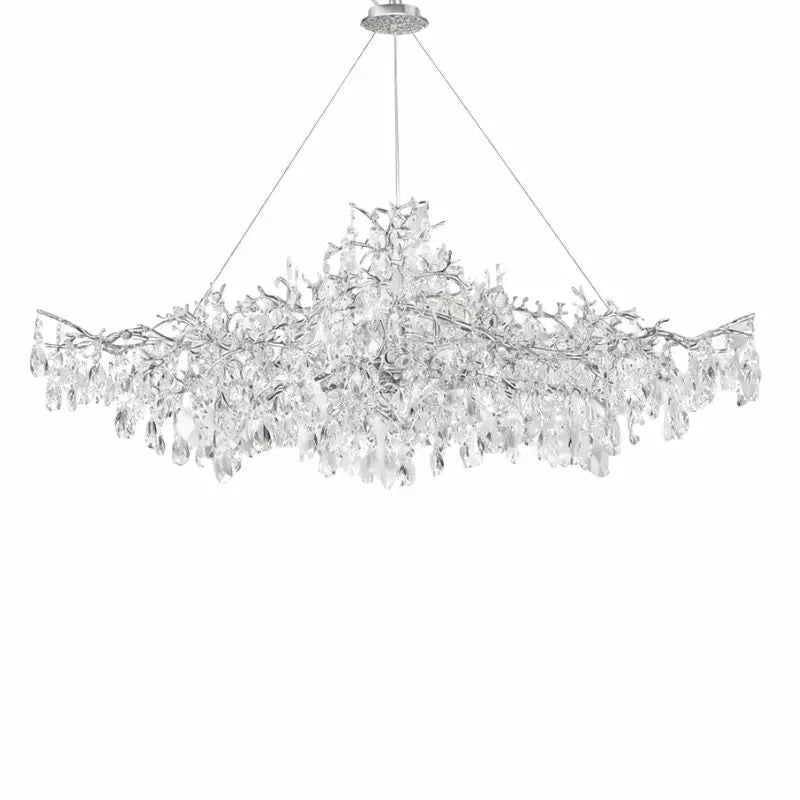Choosing the right ceiling light fittings can transform your home, making each room feel more inviting and functional. With so many options available, it's essential to understand the different types of fittings and how they can best serve your needs. This guide will help you navigate the world of ceiling light fittings, offering tips on selecting the right fixtures for each room, factors to consider, and current trends.
Key Takeaways
- Understanding the different types of ceiling light fittings can help you choose the best options for your home.
- Each room in your home may require a different type of ceiling light fitting to meet its unique needs.
- Factors like room size, ceiling height, and personal style are crucial when selecting ceiling light fittings.
- Proper installation and maintenance of ceiling light fittings ensure safety and longevity.
- Keeping up with trends in ceiling light fittings can add a modern touch to your home.
Understanding Different Types of Ceiling Light Fittings
Choosing the right ceiling light fitting can transform a room from dull to dazzling. Knowing the differences among types of ceiling lights will help you pick the best one for your space. Here are the main types of ceiling light fittings you should know about:
Flush Mount Lights
Flush mount lights are installed directly against the ceiling with no gap. They are perfect for rooms with low ceilings or where you want a clean, unobtrusive look. These lights provide good ambient lighting and are often used in bedrooms, hallways, and closets.
Semi-Flush Mount Lights
Semi-flush mount lights hang slightly below the ceiling, usually by a short rod or chain. This design allows for a bit more style and can make a room feel more open. They are a great choice for living rooms, dining rooms, and entryways.
Pendant Lights
Pendant lights hang from the ceiling by a cord, chain, or rod. They come in various styles and sizes, making them versatile for different spaces. Pendant lights are often used over kitchen islands, dining tables, or as statement pieces in living rooms.
Chandeliers
Chandeliers are elaborate light fixtures that hang from the ceiling, often featuring multiple arms and lights. They add a touch of elegance and are perfect for dining rooms, foyers, and even bedrooms. If you're looking to add a bit of luxury, consider exploring a range of exquisite crystal chandeliers.
Choosing the Right Ceiling Light Fitting for Each Room
Living Room Lighting
The living room is often the heart of the home, where families gather and entertain guests. A mix of lighting types can enhance the ambiance and functionality of this space. Consider using a chandelier or pendant light as a focal point. For smaller living rooms, flush-mount or semi-flush mount fixtures work well. Track lighting can highlight a gallery wall or fireplace, adding a touch of elegance.
Bedroom Lighting
Bedrooms are personal sanctuaries where relaxation is key. Flush-mount or semi-flush mount fixtures provide gentle ambient light, perfect for waking up or winding down. If you have a reading nook or work area, task lighting like a pendant light can be beneficial. For a cozy touch, consider adding DIY wall decor for bedroom to complement your lighting.
Kitchen Lighting
Kitchens require bright, functional lighting for cooking and meal prep. Pendant lights over the island or countertops offer focused task lighting. Under-cabinet lights can illuminate workspaces, while a central flush-mount fixture provides overall ambient light. For those on a budget, there are many affordable kitchen decor ideas that can enhance your space without breaking the bank.
Bathroom Lighting
Bathrooms need practical and functional lighting. A flush-mount fixture is ideal for general lighting, while track lighting or LED vanity lights can provide focused illumination for grooming tasks. Wall sconces near the mirror can also be a great addition. If you're wondering how to decorate a small bathroom, consider using light fixtures that double as decor elements.
Choosing the right ceiling light fitting for each room can transform your home, making it more comfortable and visually appealing. Whether you're looking to brighten up your living room with these lighting ideas or add a touch of elegance to your bedroom, the right lighting can make all the difference.
Factors to Consider When Selecting Ceiling Light Fittings
Choosing the right ceiling light fittings for your home involves several important factors. Understanding these factors can help you make the best choice for each room.
Room Size and Ceiling Height
The size of the room and the height of the ceiling play a crucial role in selecting the appropriate light fitting. For rooms with low ceilings, flush mount lights are ideal as they don't hang down too far. In contrast, rooms with high ceilings can accommodate more dramatic fixtures like captivating chandeliers & pendant lights.
Lighting Needs and Preferences
Consider the specific lighting needs of each room. For example, a kitchen might require bright, focused lighting for cooking, while a living room might benefit from softer, ambient lighting. Think about whether you need task lighting, ambient lighting, or accent lighting.
Style and Aesthetics
The style of the light fitting should complement the room's decor. Whether you prefer modern, rustic, or vintage styles, choose a fixture that enhances the room's overall look. Remember, the right light fitting can be a statement piece in your home.
Energy Efficiency
Energy efficiency is an important consideration. LED lights are a popular choice because they use less energy and last longer than traditional bulbs. This can lead to significant savings on your energy bills over time.
When selecting ceiling light fittings, always consider the room's size, lighting needs, style, and energy efficiency to ensure you make the best choice for your home.
Installation Tips for Ceiling Light Fittings
Safety Precautions
Before starting any installation, always turn off the power at the circuit breaker to avoid any electrical hazards. Use a voltage tester to ensure the wires are not live. Wear safety goggles and gloves to protect yourself from any debris or sharp edges.
Tools and Materials Needed
Gather all necessary tools and materials before beginning the installation. Here's a list to help you get started:
- Screwdriver (flathead and Phillips)
- Voltage tester
- Wire strippers
- Ladder
- Electrical tape
- New light fixture
- Mounting hardware
Step-by-Step Installation Guide
- Turn off the power at the circuit breaker.
- Remove the old light fixture by unscrewing it from the ceiling and disconnecting the wires.
- Use the voltage tester to ensure no electricity is flowing through the wires.
- Connect the wires from the new fixture to the wires in the ceiling. Typically, this involves matching the colors: black to black, white to white, and green or copper to the ground wire.
- Secure the new fixture to the ceiling using the provided mounting hardware.
- Turn the power back on and test the new light fixture to ensure it works properly.
When to Hire a Professional
If you are uncomfortable working with electricity or if the installation seems too complex, it is best to hire a professional electrician. This is especially important for intricate fixtures like chandeliers or if you need to install new wiring. Hiring a professional ensures the job is done safely and correctly.
Proper installation not only enhances the look of your home but also ensures the safety and longevity of your light fittings.
Maintaining and Cleaning Your Ceiling Light Fittings
Regular Dusting and Cleaning
Ceiling light fixtures can gather dust and grime over time. Regular cleaning helps maintain their brightness and appearance. For routine dusting, use a soft cloth or a duster. For more thorough cleaning, a damp cloth can be used to wipe down the fixture. Make sure to turn off the light and let it cool before cleaning.
Replacing Bulbs and Parts
Over time, bulbs and other parts of your ceiling light fittings may need replacement. Always check the manufacturer's instructions for the correct type of bulb. When replacing parts, ensure the fixture is turned off and cool to avoid any accidents.
Troubleshooting Common Issues
Sometimes, ceiling lights may flicker or not work at all. Common issues include loose bulbs, faulty wiring, or a tripped circuit breaker. Check these components first before calling a professional. If the problem persists, it might be time to consult an expert.
Ensuring Longevity
To ensure your ceiling light fittings last long, follow these tips:
- Regularly clean and dust the fixtures.
- Replace bulbs and parts as needed.
- Address any issues promptly to prevent further damage.
Keeping your ceiling light fittings in good condition not only enhances their appearance but also contributes to an eco-friendly home decor.
By following these simple steps, you can keep your ceiling lights looking great and functioning well for years to come.
Trends in Ceiling Light Fittings
Modern and Minimalist Designs
Modern and minimalist ceiling lights are all about sleek finishes and slim profiles. These designs often feature integrated LED lights, which are not only energy-efficient but also provide plenty of illumination. Pairing these fixtures with a dimmer switch can help create the perfect ambient lighting for any room. For those who love contemporary / modern lighting, these options are a must-have.
Rustic and Farmhouse Styles
Rustic and farmhouse ceiling lights bring a cozy, homey feel to any space. These fixtures often use natural materials like wood and rattan, and they may include distressed accents like seedy glass or galvanized metal. This style is perfect for those who enjoy modern farmhouse kitchen decor or a boho chic home decor theme.
Vintage and Industrial Looks
Vintage and industrial ceiling lights are making a comeback. These designs often feature exposed bulbs, metal finishes, and a rugged, utilitarian look. They are ideal for anyone interested in vintage home decor trends or industrial style home decor. These fixtures can add a unique, nostalgic touch to any room.
Smart Lighting Solutions
Smart lighting solutions are becoming increasingly popular. These ceiling lights can be controlled via smartphone apps or voice commands, making it easy to adjust the lighting to suit your needs. They are perfect for tech-savvy homeowners looking to integrate smart home features into their lighting design.
Keeping up with the latest trends in ceiling light fittings can help you create a stylish and functional home. Whether you prefer modern, rustic, vintage, or smart lighting solutions, there's something for everyone.
Ceiling light fittings are evolving with new trends that blend style and function. From sleek modern designs to classic crystal chandeliers, there's something for every taste. Don't miss out on our latest collections and special offers. Visit our website to explore more and find the perfect lighting for your home.
Conclusion
Selecting the right ceiling light fittings for your home can make a big difference in how your space looks and feels. Whether you prefer the elegance of a chandelier, the simplicity of flush mount lights, or the versatility of track lighting, there's a perfect option for every room. Remember to consider the size and height of your room, the type of lighting you need, and how the fixture complements your decor. With the right ceiling lights, you can create a welcoming and well-lit environment that suits your style and needs. Happy lighting!
Frequently Asked Questions
What are the different types of ceiling light fittings?
There are several types of ceiling light fittings. These include flush mount lights, semi-flush mount lights, pendant lights, and chandeliers. Each type has its own unique style and is suitable for different rooms and purposes.
How do I choose the right ceiling light fitting for my living room?
For a living room, you might want to consider a combination of different lighting types. A chandelier or pendant light can serve as a focal point, while recessed lighting or wall sconces can provide additional illumination. Consider the room's size, ceiling height, and your personal style when choosing.
What factors should I consider when selecting a ceiling light fitting?
When selecting a ceiling light fitting, consider the size of the room, the height of the ceiling, your lighting needs, and your personal style. Energy efficiency is also an important factor, especially if you want to save on electricity bills.
Can I install ceiling light fittings by myself?
Yes, you can install ceiling light fittings by yourself if you follow the right steps and safety precautions. However, if you're not comfortable with electrical work or if the installation seems complex, it's best to hire a professional.
How do I maintain and clean my ceiling light fittings?
To maintain and clean your ceiling light fittings, regularly dust them and clean with a damp cloth. Replace bulbs and any broken parts as needed. Troubleshoot common issues like flickering lights and ensure all connections are secure to prolong the life of your fixtures.
What are the latest trends in ceiling light fittings?
Some of the latest trends in ceiling light fittings include modern and minimalist designs, rustic and farmhouse styles, vintage and industrial looks, and smart lighting solutions. These trends can help you find a style that fits your home decor.







